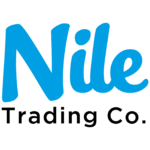SPUNBOND NONWOVEN
Spunbond nonwoven is a lightweight yet durable fabric made by spinning fine filaments of polypropylene or polyester and bonding them through heat and pressure. This innovative process results in a material that is strong, tear-resistant, and versatile,
Spunbond nonwoven is a lightweight yet durable fabric made by spinning fine filaments of polypropylene or polyester and bonding them through heat and pressure. This innovative process results in a material that is strong, tear-resistant, and versatile,
Production Process
- Polymer Extrusion: Polypropylene or polyester pellets are melted and extruded into fine filaments.
- Filament Spinning: The filaments are spun into a web-like structure using specialized machinery.
- Web Formation: Heat and pressure bond the web, forming a durable fabric.
- Finishing: The fabric is treated with finishing agents to enhance properties like softness, water repellency, or antimicrobial resistance.
Key Properties
- Lightweight: Easy to handle and ideal for applications where weight matters.
- Durable: Resistant to tears, punctures, and abrasions for long-lasting use.
- Breathable: Allows air and moisture to pass through, ensuring comfort in usage.
- Water-Repellent: Can be treated to resist water penetration.
- Cost-Effective: A budget-friendly alternative to traditional fabrics.
Applications of Spunbond Nonwoven
- Automotive: Used in car interiors like seats, door panels, and headliners.
- Healthcare: Found in medical gowns, masks, and hygiene products.
- Agriculture: Used for crop covers and soil stabilization.
- Packaging: Provides protective and lightweight packaging solutions.
Sustainability
Spunbond nonwoven fabrics are an environmentally friendly choice due to:
- Low Environmental Impact: Minimal water and energy required during production.
- Recyclability: Made from recyclable polypropylene, reducing landfill waste.
- Durability: Long lifespan reduces the need for frequent replacements.
At Your Service in Selecting the Ideal Spunbond Nonwoven for Your Needs
- Fabric Weight: Impacts durability and performance—lighter for disposables, heavier for demanding tasks.
- Width: Determines suitability for applications; we offer customizable widths to meet your needs.
- Color: Available in various shades for customization or branding.
- Finishing: Enhances properties like water repellency, softness, or antimicrobial resistance.
- Cost: A cost-effective choice with options tailored to your budget and performance goals.
Spunbond Nonwoven (made from spun and bonded filaments) | Material | Key Differences |
Woven Fabric (made by interlacing yarns at right angles) | Spunbond is lighter, more durable, tear-resistant, and breathable. Woven fabric is heavier and less flexible. | |
Knitted Fabric (made by interlocking loops of yarns) | Spunbond is more durable, tear-resistant, and puncture-resistant. Knitted fabrics are stretchier and softer. | |
Paper (made from fibers) | Spunbond is more durable, tear-resistant, and flexible. Paper is more absorbent | |
Film (made from thin sheets of plastic via extrusion) | Spunbond is breathable and flexible, while film is more waterproof |

